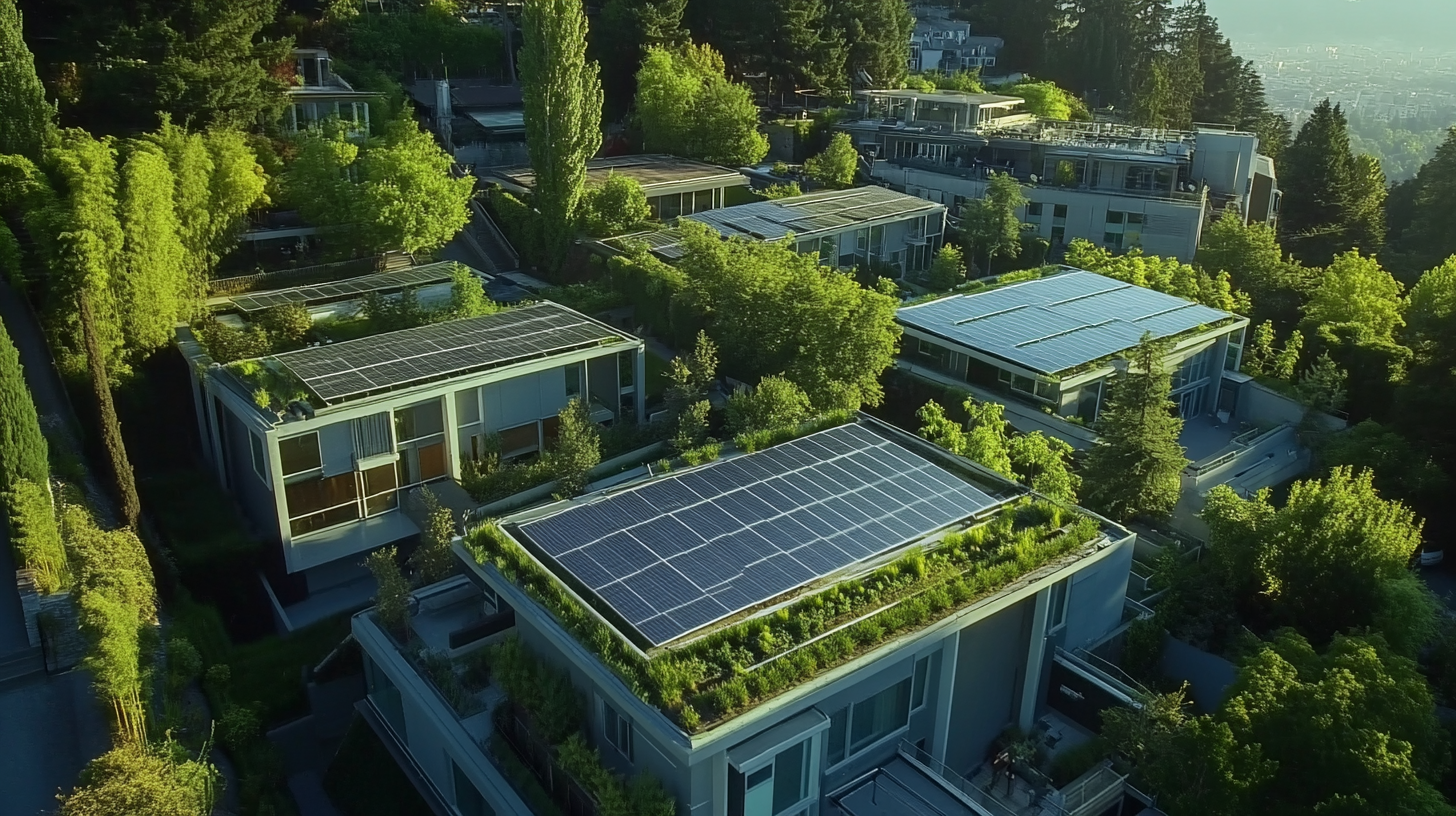Exploring Innovative Solutions: How Pv Panels Transform Energy Efficiency Worldwide
In recent years, the global shift towards renewable energy has accelerated dramatically, with photovoltaic (Pv) panels emerging as a cornerstone of this transformation. According to the International Renewable Energy Agency (IRENA), solar energy capacity has surged to over 900 gigawatts globally, with Pv panels accounting for a significant share of this growth. As countries strive to meet ambitious climate goals, the efficiency and affordability of Pv panels continue to improve, making them a viable solution for energy production worldwide. A report by the International Energy Agency (IEA) predicts that solar power could be the largest source of electricity by 2030, underscoring the pivotal role of Pv technology in enhancing energy efficiency. This blog will explore the innovative solutions offered by Pv panels, highlighting their contributions not only to individual energy systems but also to the planet's sustainability efforts.

The Global Surge in Solar PV Capacity: Analyzing Growth Statistics and Trends
The global surge in solar photovoltaic (PV) capacity has marked a significant shift in the way we harness energy. In recent years, technological advancements and decreasing costs have propelled solar power to the forefront of renewable energy solutions. According to recent reports, total solar PV capacity worldwide has now surpassed 1,000 gigawatts, a milestone that reflects the growing adoption of this clean energy source across various regions. Countries like China, the United States, and India are leading the charge, investing heavily in solar infrastructure to meet rising energy demands sustainably.
This expansion is not merely a trend; it signals a broader shift in energy policies and consumer behavior. Many governments are setting ambitious targets for renewable energy integration, and solar PV is emerging as a cornerstone of these initiatives. The proliferation of decentralized energy systems is empowering individuals and businesses to take control of their energy production, often resulting in significant cost savings. Furthermore, advancements in battery storage technology are enhancing energy reliability, making solar a more viable option for a diverse array of users, from residential neighborhoods to large-scale industrial operations. As global trends indicate, the future of energy efficiency is brightly illuminated by the transformative potential of solar PV technology.
Global Solar PV Capacity by Region (2023)
Decentralizing Energy: How PV Panels Empower Communities and Reduce Reliance on Grids
The transformational power of photovoltaic (PV) panels extends far beyond individual homes; it enables whole communities to decentralize their energy production. By harnessing solar energy, areas that were once entirely reliant on centralized grid systems can now cultivate self-sufficiency. According to a report by the International Renewable Energy Agency (IRENA), communities utilizing solar technology can reduce grid dependency by up to 50% within five years of installation. This shift not only fosters energy independence but also enhances resilience against energy price fluctuations and outages.
PV panels empower local communities to become active participants in energy generation. This democratization of energy can lead to significant economic benefits. A study by the Solar Energy Industries Association (SEIA) indicated that community solar projects have the potential to create over 100,000 jobs by 2030, driving local economies forward. Furthermore, community solar initiatives often focus on underserved populations, providing access to clean energy resources that might have been previously unattainable, thereby reducing energy poverty and fostering social equity.
In this new energy landscape, PV panels are not just a source of electricity; they represent a shift towards a more sustainable, equitable, and resilient future. As we move toward sustainable development goals, embracing decentralized energy solutions like PV panels will be key in empowering communities globally.

Innovations in PV Technology: Enhancing Efficiency Through Advanced Materials and Designs
The evolution of photovoltaic (PV) technology is revolutionizing the way we harness and utilize solar energy. Innovations in materials, such as perovskites and bifacial solar cells, are leading to significant enhancements in energy conversion efficiency. Perovskite solar cells, for instance, are lighter, cheaper to produce, and offer higher efficiency rates than traditional silicon-based cells. With their remarkable ability to absorb more sunlight, they promise to significantly increase the energy output of solar installations worldwide.
Moreover, the design of PV panels is also undergoing a transformation. Advanced engineering techniques are allowing for the development of integrated systems that not only maximize sunlight capture but are also aesthetically pleasing. For instance, building-integrated photovoltaics (BIPV) blend seamlessly with architectural designs, providing a dual function of energy generation and structural support. This innovation not only enhances the efficiency of solar energy systems but also encourages their adoption in urban environments, where space limitations have traditionally hindered solar expansion. Through these advancements, PV technology is set to play a crucial role in creating a sustainable energy future.

Economic Impacts of Solar PV Adoption: Job Creation and Cost Savings in Renewable Energy
The adoption of solar photovoltaic (PV) technology is reshaping the economic landscape worldwide, significantly impacting job creation and cost savings within the renewable energy sector. According to a report by the International Renewable Energy Agency (IRENA), the global solar industry employed over 3.8 million people in 2020, marking a substantial increase from previous years. This trend is projected to continue as governments and businesses prioritize sustainable energy solutions in their recovery plans from the global pandemic.
Moreover, the financial benefits of transitioning to solar energy cannot be overlooked. A study from the National Renewable Energy Laboratory (NREL) highlights that residential solar PV systems can save homeowners an average of $20,000 over the system's lifespan through reduced energy bills. These cost savings, combined with the potential for job growth, underscore the dual economic advantages of solar energy adoption. As the technology continues to advance, further reduction in costs and an increase in efficiency will make solar power an even more attractive option for energy consumers around the world.
Environmental Benefits of PV Panels: Reducing Carbon Footprint and Promoting Sustainability
Photovoltaic (PV) panels have emerged as a pivotal technology in the quest for sustainable energy solutions. By harnessing sunlight and converting it into electricity, these panels significantly reduce reliance on fossil fuels, thereby playing a crucial role in diminishing the carbon footprint of both individuals and industries. The environmental benefits are profound; as more households and businesses adopt solar power, the collective impact on greenhouse gas emissions is substantial. This transition not only contributes to cleaner air and water but also mitigates climate change, fostering a healthier planet for future generations.
In addition to direct carbon reduction, PV panels promote sustainability by encouraging energy independence and resilience. By generating electricity locally, communities can decrease their vulnerability to energy crises caused by geopolitical tensions or economic fluctuations. Moreover, the widespread installation of solar panels can drive innovation and job creation in the renewable energy sector. This holistic approach not only supports environmental stewardship but also generates economic opportunities, showcasing how PV technology transcends mere energy production to cultivate a sustainable future. Through these advancements, the integration of PV panels into our energy systems exemplifies a transformative step towards a more sustainable and eco-conscious world.
